



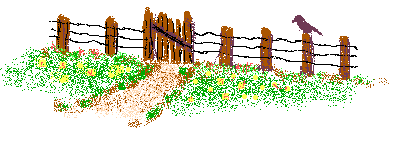
the fence post
(editor's letter)
dear friends:
the other day i was riding in the car with my husband & kids. i looked over at my husband who was driving and said "slow down,i want to look at the trash". he couldn't stop laughing and he thinks i'm so weird. he told me i could get out and walk if i liked and that he'd even give me his belt so i could bind up my findings and sling them over my shoulder when walking home. i figure "what does he know?" he still says when describing my occupation- "she makes stuff".
i get a kick out of that story because i know no matter how hard i try i can't convince him that one man's trash is this woman's treasure. my kids even get embarrassed when i go around the block a few times to scope out an object before plucking it from the garbage. i'll have you know that is how i found a really nice wooden coat tree!
i have come to the realization some people just aren't cut out for seeing it the way we do,some people see it " a little" some people see it "almost all the way" and then there are the few who see it "the same". these are the ones who say "wow look at that" at the exact same time as you do when entering an antique shop (or driving by a pile of garbage). we have to be patient with the primitive-impaired- they are still in training and we should not loose hope for them.
it's an uphill battle, i have family and friends who look at my dolls and still say "um that's nice" - gee thanks...i'd probably get a better response from the trash man...at least he'd say "it's ready for the trash lady" and i'd have to smile at him and say "that's more like it!".
primitively yours,
maria pahls
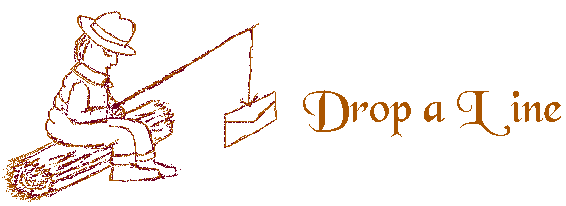
some comments from cathy about outsider art:
i studied outsider art as an undergrad, after some fighting with my tutor as he was not prepared to recognize it as anything but 'whimsical' to begin with. then when i got into the project we both discovered the depth and complexity to this area of art.....now i do not like giving absolute definitions but would say outsider art differs from other forms by the fact the work created is not classed as art by the creator, rather it is a necessary pursuit, their only true way of expression. the artist/creator is an outsider due to mental ill-health, eccentricity or behavior society deems less than the norm. the 'art' is not called this by its maker but is often hidden away. the materials used are often very basic and cheap.
the term outsider art has been taken and mis-used over the years. outsider may have been hip over recent decades but the true outsider artist would shy away from any publicity and would not wish to be parted from their work, if they are alive. there is a worthy magazine called raw visions which is worth checking out. this mag covers outsider and naive folk art.
needless to say the term outsider art is still much debated and argued over.rather like postmodernism it is something academics will always agree to disagree on - to keep them busy
on creative process (issue 70)
primitive ponderings
i was just talkin to someone about this the other day. i was saying how i often think an idea to death! i do a very minimal amount of sketches and have been blessed to almost always "nail it" the first time i sew it when it comes to dolls. sometimes i will re-do a bit here or there but when i design with something specific in mind i usually have to make that something just once, but seldom have had to do it more than twice. i have heard some say they are on their eleventh head and it still isn't right...i have not yet had that happen and i'm so impatient sometimes that i'm sure this is a good thing. someone on another list said they think good in the shower, me too since that is the only time i have any peace and quiet most days. i also like to jot down ideas, i have heard others say this too. sometimes i don't have time to develop an idea so i jot it down. ~maria
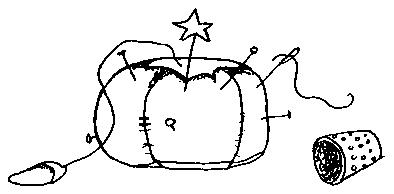
tips & techniques
WRAP UP WITH OUTDATED FABRIC
if you have some fabric in your stash that is outdated or not your style and you don't want to shred it up for filling dolls consider wrapping gifts with it.
FERN EMBROIDERED KEY SATCHEL
the ferns on the little bag were done with embroidery floss. stitched in a variety of greens, the delicate ferns are rendered using only a "straight stitch" or a "back stitch". the finished bag is fully lined with no sloppy embroidery threads to snag.
enlarge/elongate the pattern and trace onto a 33" piece of heavy ticking or muslin-the pattern piece should be 32".
one of two techniques can be used to embroider the bag.
- fold the bag in half r.s.t. matching the beveled "A" ends. pin in place and sew with a ¼" allowance leaving open a 3"-4 1/2" (big enough to squeeze your hand in) section of one side for turning. trim seams to 1/8" except in 3" area. once the bag is turned and pressed use the 3" opening to enter the embroidery floss and render the design. pass through one layer of fabric only to keep the bag lining neat. knot all floss in between the two layers of fabric.
- alternately you can fold the cut fabric in half using the diagrams as a guide matching "A" ends. next fold up the flat end and fold down the tapered ends to resemble bag shape. mark with chalk the areas that will be embroidered noting which side is "up". unfold bag and render fern design. then sew as directed facing, embroidery to center during sewing.
about the embroidery: use a 3-ply piece of floss for the embroidery. note the ferns on the lip of the bag are embroidered in the opposite direction of the ferns on the body of the bag.
sew small opening shut when embroidery is complete. with the right side of the embroidery facing in, fold and sew the body of the bag by hand catching the inner two layers of fabric with the thread. knot off and hide knot. turn purse and attach a decorative button if desired on the top of the lip. to secure lip to bag use a small snap or hook and eye.
use about 18-25" of cording and knot each end. sew ends to sides of bag near lip.
use to send as gifts through the mail as they are nice and flat or fill with seed packets and give as gifts. great for toting keys and cash or a small sewing kit.
the idea could be extended to embellish a pillowcase, table runner, pin cushion or clothing. c 1999 maria pahls
CLICK ON ANY IMAGE FOR A LARGE VIEW
CLICK ON ANY IMAGE FOR A LARGE VIEW
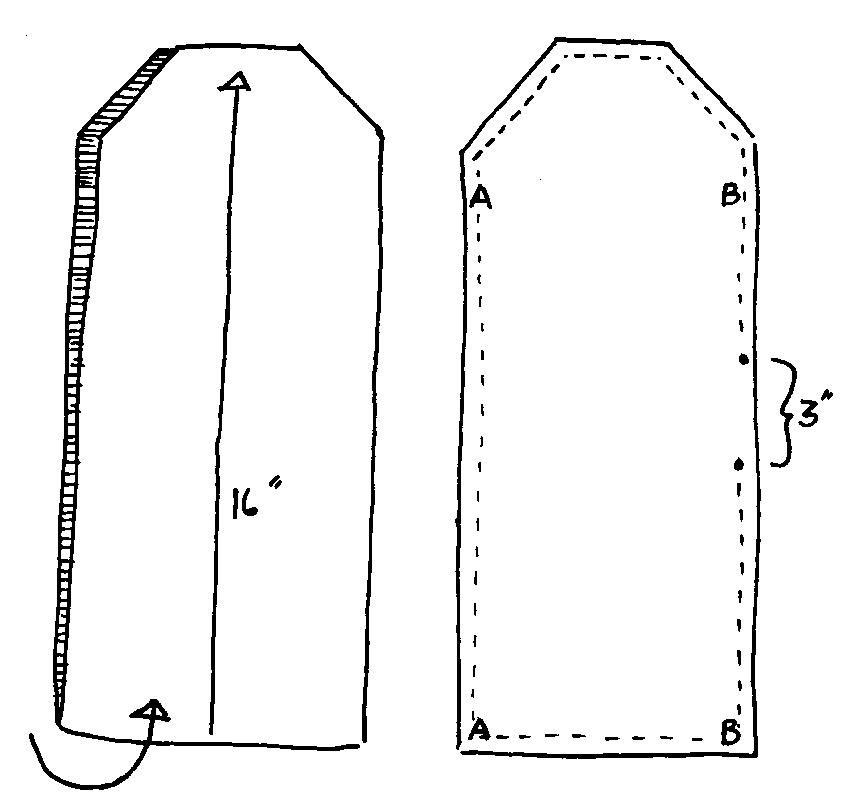


WHAT'S IT? ironware~ since the time of the first ironworks (around 1650)blacksmiths began producing a variety of utilitarian objects. since homes during early times were heated by fireplace a great number of surviving iron work is for the hearth. in addition "hardware" pieces still survive. originally meant to strengthen heavy wood pieces such as cupboards, chests and cabinets, iron braces evolved into decorative accents.
trammel~ iron ware piece consisting of an arrangement of links and a hook for raising and lowering a kettle in a fireplace.
pewter~ produced from about the mid 1600's to 1850-for countless everyday articles-with the exception of cooking utensils-pewter is a soft metal that can be easily bent, scratched or dented and is ruined when it makes close contact with heat. it is an amalgam of base metals, mostly tin and copper plus varying amounts of other metals. it's color is determined by the composition and can range from a silver-like appearance to a bluish-gray. use caution if you intend to use collected pewter pieces as earlier pieces often contained lead.
tin~ a metallic element used to coat other metals to prevent corrosion.
Artist Interview
JEAN AHEARN
PRIMITIVE SIS
MP: have you always been creative?
JCA: "You know, I never thought of myself as creative! I made paper dolls as a child, learned to sew by age 11, and often frustrated my mother as I tried to learn to knit. By age 18, I had spent years making some of my own clothes.
I'd had art in elementary school, and one art class in high school. I remember thinking what I wanted to do was draw people.
Away from home on my own, I learned to knit (at last!) and crochet, and I made myself some sweaters, vests, and even an ecru, crochet-thread bikini that I never dared to wear!
Many people would look at my handwriting and say, "You must be creative!" I didn't think so. "
MP: well,then, how did you discover you were creative?
JCA: "To overcome some of my shyness and gain some confidence in myself, I attended a community college when my husband and I were living in south Texas. I majored in art and also took private watercolor lessons. I enjoyed learning about design, and drawing, and the art history, but I wasn't sure that I would ever practically use what I'd learned!
With a move to Pennsylvania, I continued with the quilting that I'd begun learning in Texas. And, working on a crazy quilt wall hanging for a woman, I used the design elements I'd learned after all!
I met a woman who introduced me to the world of crafting. She then introduced me to a woman who needed someone to sew for her for the craft shows she was doing. I successfully worked for her for a year and then had to move again. "
MP: from there,how did you start your own business?
JCA: "A move to Ohio took me back to college, but as an English major. During a spring break one year I decided I would try crafting on my own and selling what I'd make. I loved being 'behind the scenes' and not doing shows, so I took my items to a consignment shop. The women there said, "Oh, you do primitives!" I had no idea what they meant!
The first doll I made as a child was a stick doll, and a display of apple head dolls I saw at age 12 greatly captivated me, and colonial dolls intrigued me. So, while the shop called what I made "primitive," I was actually making country things that were very tea dyed, and I used homespuns. Yet, maybe the love of sticks made into dolls, and dried apples forming wrinkled little people had influenced me!
From selling there, I moved to adding on another shop to sell in, and then a craft mall. I truly loved the sense of having 'my own little store' in a craft mall!
I learned to do primitive displays and acquired a position to do the owners' displays for more than a year! I later expanded my small business to include a booth in another craft mall."
MP: do you see your style changing?
JCA: "My style progresses, of course. I used to design things by just starting out and not knowing exactly what I'd come up with. But, I also use patterns. And, just as in college I learned to capture some of an author's style by reading a few of their books, I find that the more I work with patterns from other designers, the more I lose the sense of my own style. I do incorporate a sense of my style into their design, but I feel I hold back on what I could do with my creativity without the support of their patterns!
So, to help remedy that, I now do my designs by drawing first, so I can see what style I have and if I want to bend it another way! However, many of my designs that have been drawn have never been made up! I hope to change that! "
MP: would you say that your art background influenced and helped you?
JCA: "Yes. I always use the elements of design I learned in the art courses. Every item I make is held up to a mirror for critiquing of the use of line, repetition, form, color, and so on!
Also, I buy fabrics with a purpose and not just to have a collection of fabric. I select few paints and mix them."
MP: what are the means by which you achieve a primitive look?
JCA: "If I had to explain it to someone, I would have to say I really think it's just from attention given to making everything that is in and of an item look aged. A doll holding a watering can, for example, would hold a watering can that has been beaten, painted unevenly, and antiqued. You can't leave something looking new or it detracts from the overall aged look of the item. I think the primitive style just comes naturally to me - I grew up in New England and love 'old'!"
MP: how about future plans, will you expand from designing and selling finished goods?
JCA: "Yes, I plan to teach primitive doll making classes and produce patterns. I want the patterns to be very detailed in their instruction so that I am a teacher and a designer via the patterns. I also plan to sell wholesale and move away from the craft malls and consignment endeavors. I may, at some point, have get togethers in my saltbox house in its wooded setting, for women to work on their projects and enjoy the camaraderie of others who love the primitive style, also."
designs shown © 2000 jean ahearn.
Shown are "hopple hare", "whitley snowman", "marmee" doll patterns, and needle punch crow purse.
Here's a link to more about Jean and many of her patterns on Homespun Peddler at: PRIMITIVE SIS
D. Blumchen & Company
PO Box 1210
Ridgewood, NJ 07451-1210
phone: (201) 652-5595
Monday - Friday 10:00 - 4
Two sizes of real mica flakes are available: 5 ounces of vintage large flake mica in the original 1930s box or a 1-ounce box of new fine flake. contact for current prices.
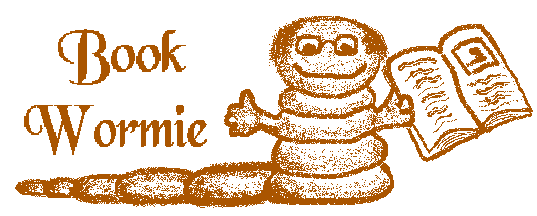
book reviews
&
books of interest
American Family Farm Antiques
(A Wallace-Homestead Price Guide)
by Terri Clemens Paperback
200 pages
(October 1994)
Wallace-Homestead Book Co
ISBN: 0870696904
Encyclopedia of American Farm Implements & Antiques
by C. H. Wendel
Paperback - 400 pages
(September 1997)
Krause Publications
ISBN: 0873415078
Gatherings : America's Quilt Heritage
by Katy Christopherson, Gerald E. Roy, paul Pilgrim, Kathryn F. Sullivan, Kathlyn F. Sullivan
Paperback - 224 pages (April 1995)
Amer Quilters Society
ISBN: 0891458603
Kitchen Collectibles : The Essential Buyer's Guide
by Diane Williamson Stoneback
Paperback - 241 pages (August 1994)
Wallace-Homestead Book Co
ISBN:0870696688
Caring for Your Collections
by Arthur Warren Schultz,
Robert McCormickAdams (Illustrator)
Hardcover - 216 pages (April 1992)
Harry N Abrams
ISBN: 0810931745

raw visions
www.rawvisions.com
prose
sloth (like rust) consumes faster than labor wars: the used key is always bright.
benjamin franklin
the following "author unknown" selections are excerpts from a book called TONY'S SCRAP BOOK (copyright 1931 by Tony Wons...
"A man who trims himself to suit everybody will soon whittle himself away."
"You have a dollar; I have a dollar. We swap. Now you have my dollar, I have your dollar. We are no better off. You have an idea. I have an idea. We swap. Now you have two ideas, and I have two ideas; both are richer. What you gave you have. What I got, you did not lose."
"The reason so few reach the top is because no successful method has yet been devised by which a person may sit down and slide uphill."
ABOUT THE SEED POD
All rights reserved. No part of this newsletter may be reproduced without written permission from the publisher, except by a reviewer who may quote brief passages in a review with appropriate credits; nor may any part of this newsletter be reproduced, stored in a retrieval system, or transmitted in any form or by any means -- electronic, mechanical, photo- copying, recording, or other -- without written permission from the publisher.
 HOME PAGE
HOME PAGE